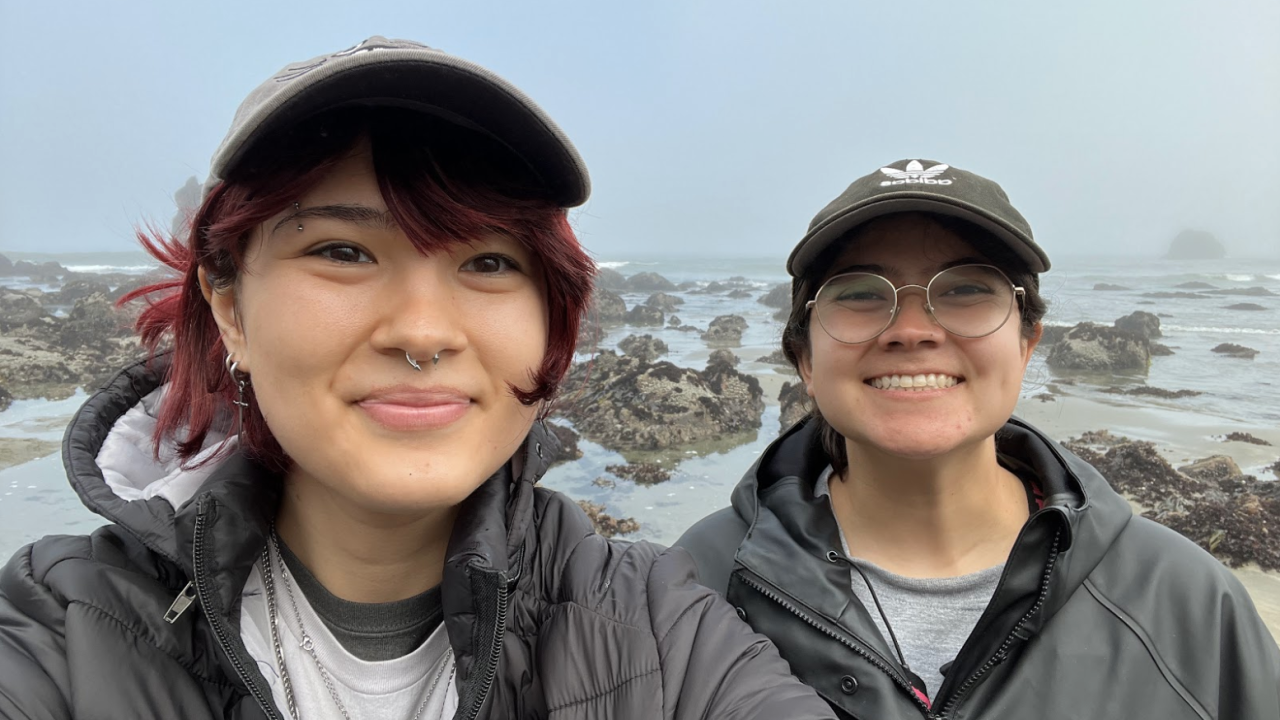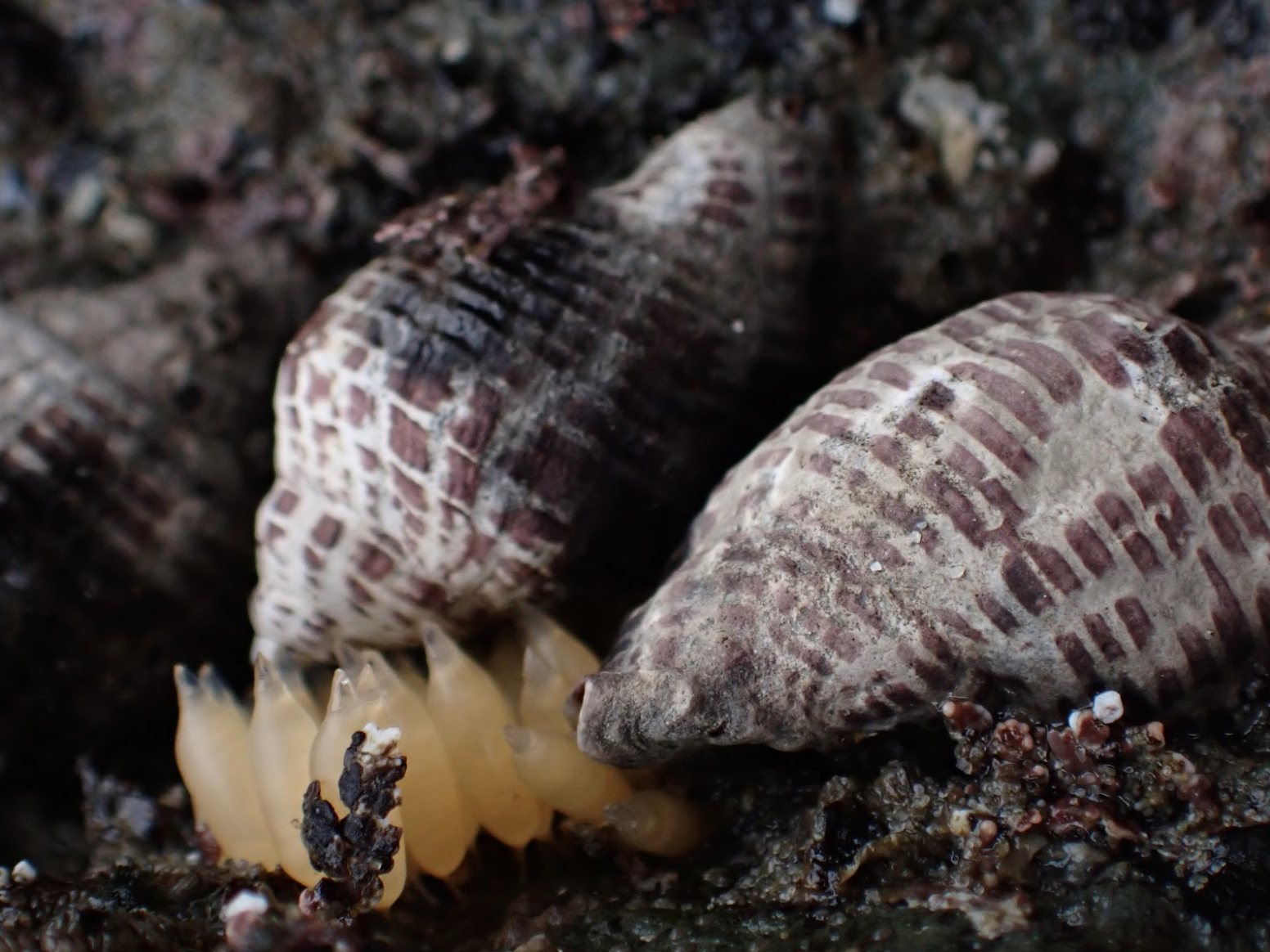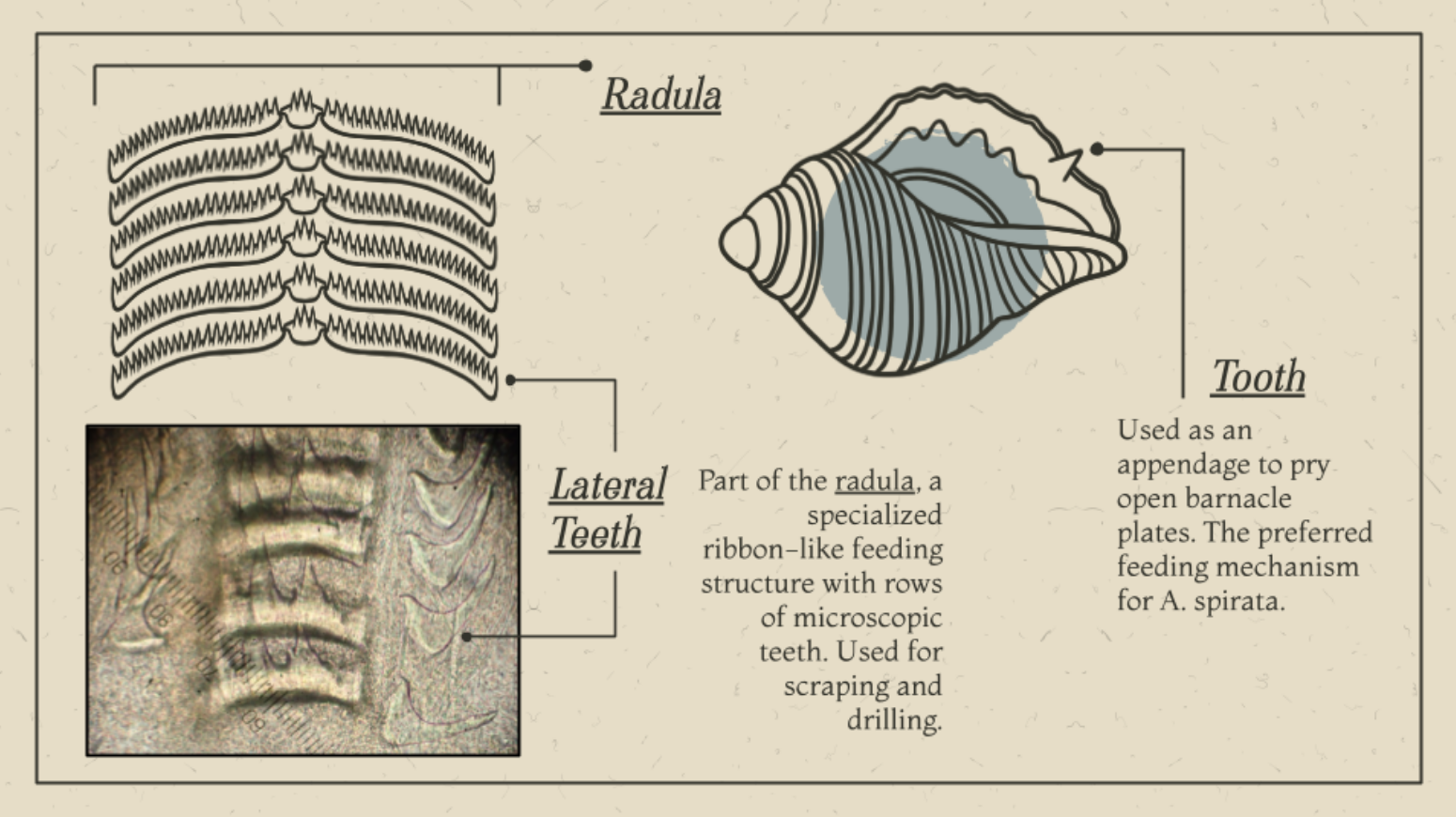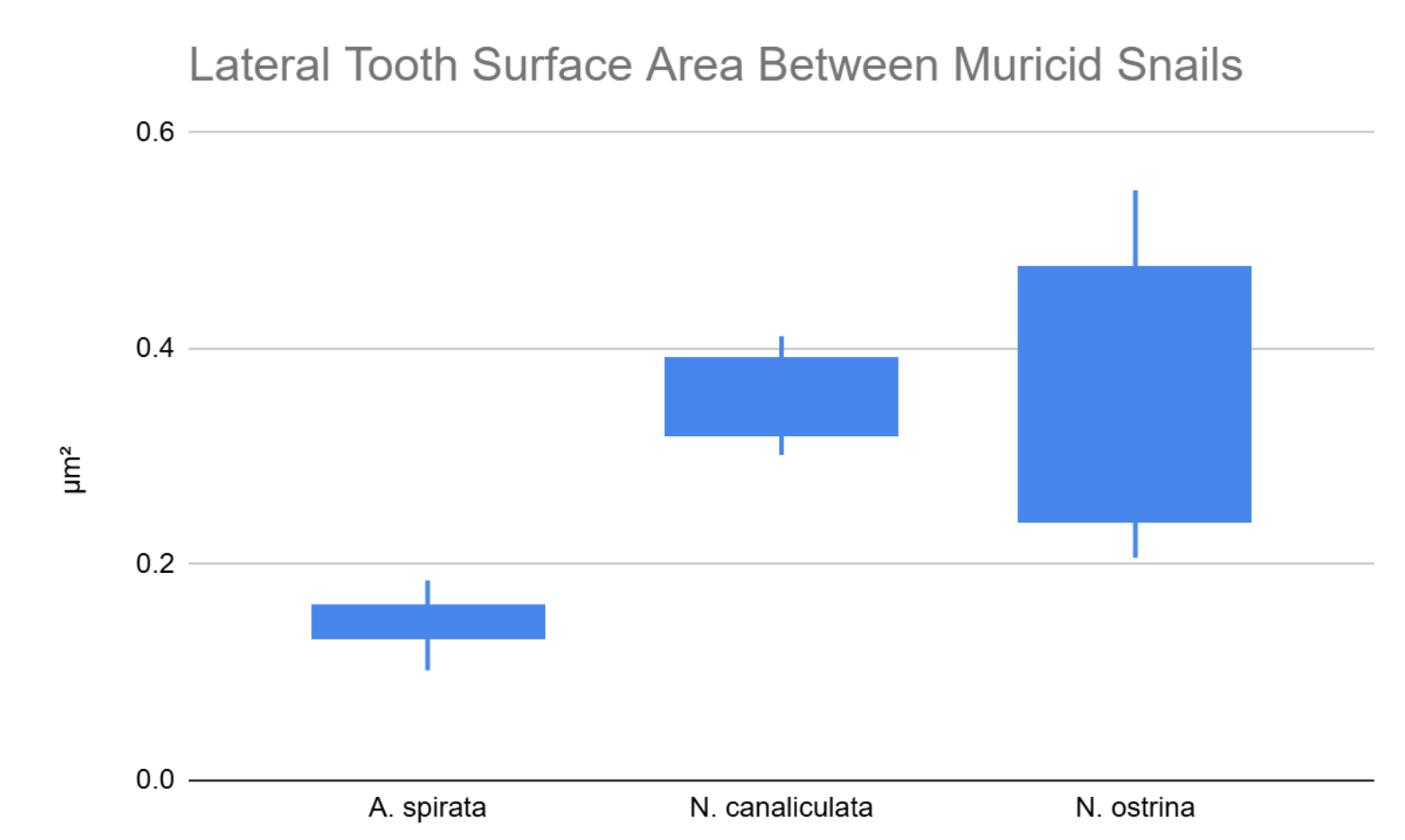
Becoming A Snail Dentist
An SRJC-BML Internship Story
My name is Qing Fields, and I’m an SRJC student dual majoring in Biology and Natural Sciences, with plans to transfer to CSUMB in the fall of 2026 to study Marine Science and Scientific Illustration. I have an enormous passion for marine invertebrate ecology and evolution, and this internship was the perfect fit for me to explore my interests while helping contribute to meaningful research.

This summer, I had the privilege of participating in this amazing program, where I learned invaluable skills that will further my education as an early-career scientist. I was fortunate to work with my incredible mentor, 5th-year PhD student Keira Monuki. Her research is focused on climate-driven range shifts in intertidal species, such as the wonderful Angular Unicorn Snail Acanthinucella spirata, which we worked with this summer.
I was able to conduct field work during low tides, collecting snails from survey areas in Dillon Beach and recording the length of their shells. Snail husbandry was something I didn’t expect to enjoy as much as I did, and learning about aquaculture and how to make an effective experimental setup while ensuring the snails were comfortable was wonderful to be a part of. I was also able to do some image analysis of snail egg capsules to calculate surface area coverage.

I was lucky to have the opportunity to work on my own personal project, in which I compared the radula morphology of Acanthinucella spirata, Nucella ostrina, and Nucella canaliculata- all members of the Muricid snail family. I was curious if the different feeding ecologies of these snails would impact the size of their lateral teeth, located on the side of each radula. A. spirata, the Angular Unicorn Snail, typically eats barnacles, using a tooth or “unicorn horn” located on the underside of its shell to pry open the plates. N. ostrina and N. canaliculata both prefer to eat mussels, and lack the tooth that A. spirata is known for, using their radula to drill through the tough shells. I was curious if, because A. spirata uses its tooth as its primary feeding mechanism, I would see reduced lateral tooth sizes compared to the radulas of N. ostrina and N. canaliculata, which rely more heavily on their radula for drilling.
To explore this, I froze and subsequently dissected 4 samples of each species of snail to isolate their radular ribbon, and created wet mounts of each for microscopy. After taking pictures at 400x magnification, I used image analysis software to calculate the average surface area of the lateral teeth for each species.

Although my results aligned with my hypothesis that A. spirata would have smaller lateral teeth, it is worth noting that my sample size was too small for me to feel comfortable making any definitive assumptions. Throughout all the literature review I did for other radula analysis projects, I consistently saw that they also had a relatively small sample size, which I quickly learned was most likely due to the time-consuming nature of dissecting tiny snails.
Overall, I had a fantastic summer getting to delve into the exciting nature of research, and through my mentor Keira’s guidance, I feel like I have gained both experience and confidence that will be pivotal in my career as a scientist as I move forward, as well as a deeper appreciation for the ocean and the incredible life it supports.
About the Program:
The SRJC-BML Internship Program provides summer research opportunities for Santa Rosa Junior College students at the Bodega Marine Laboratory.
